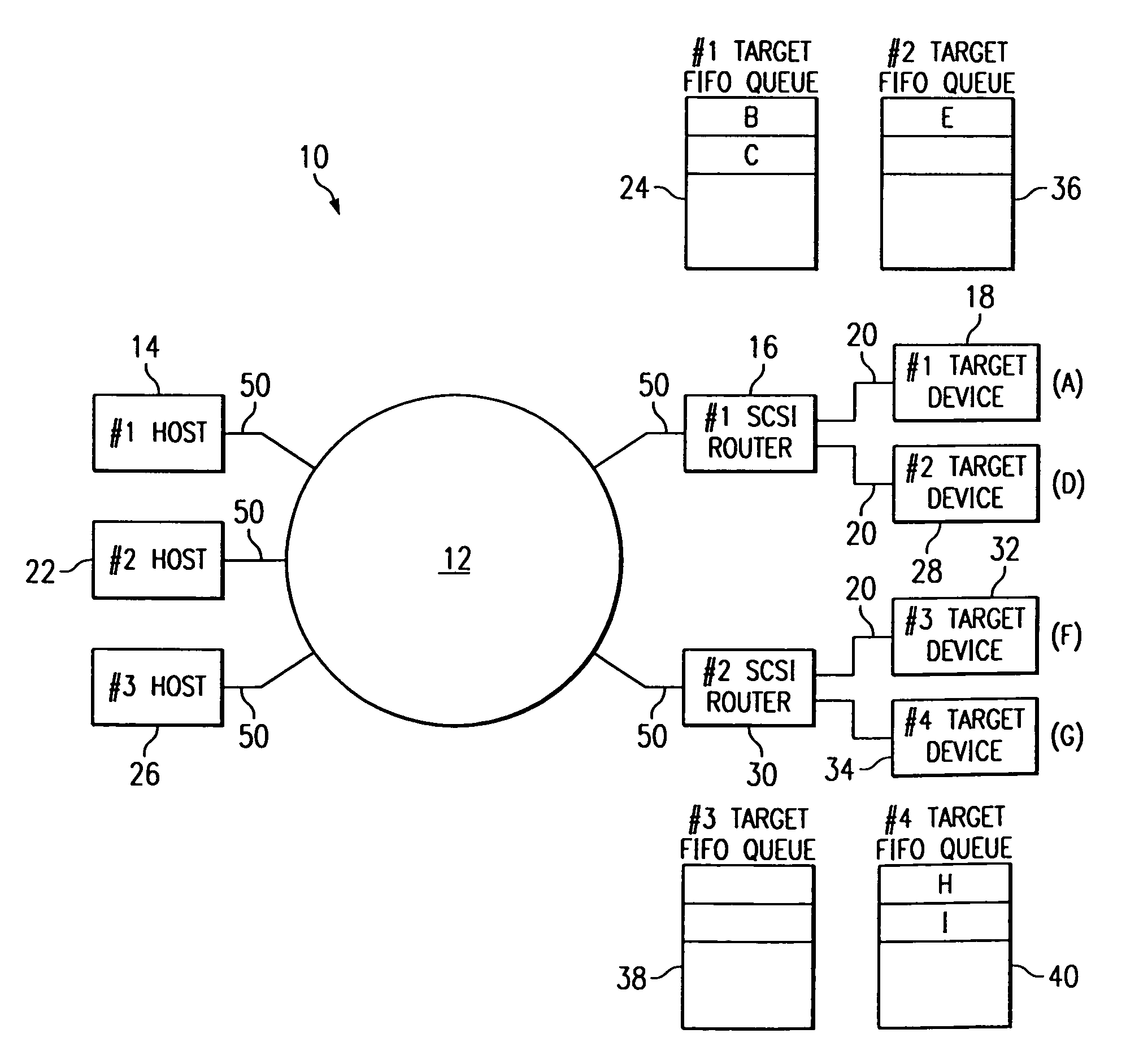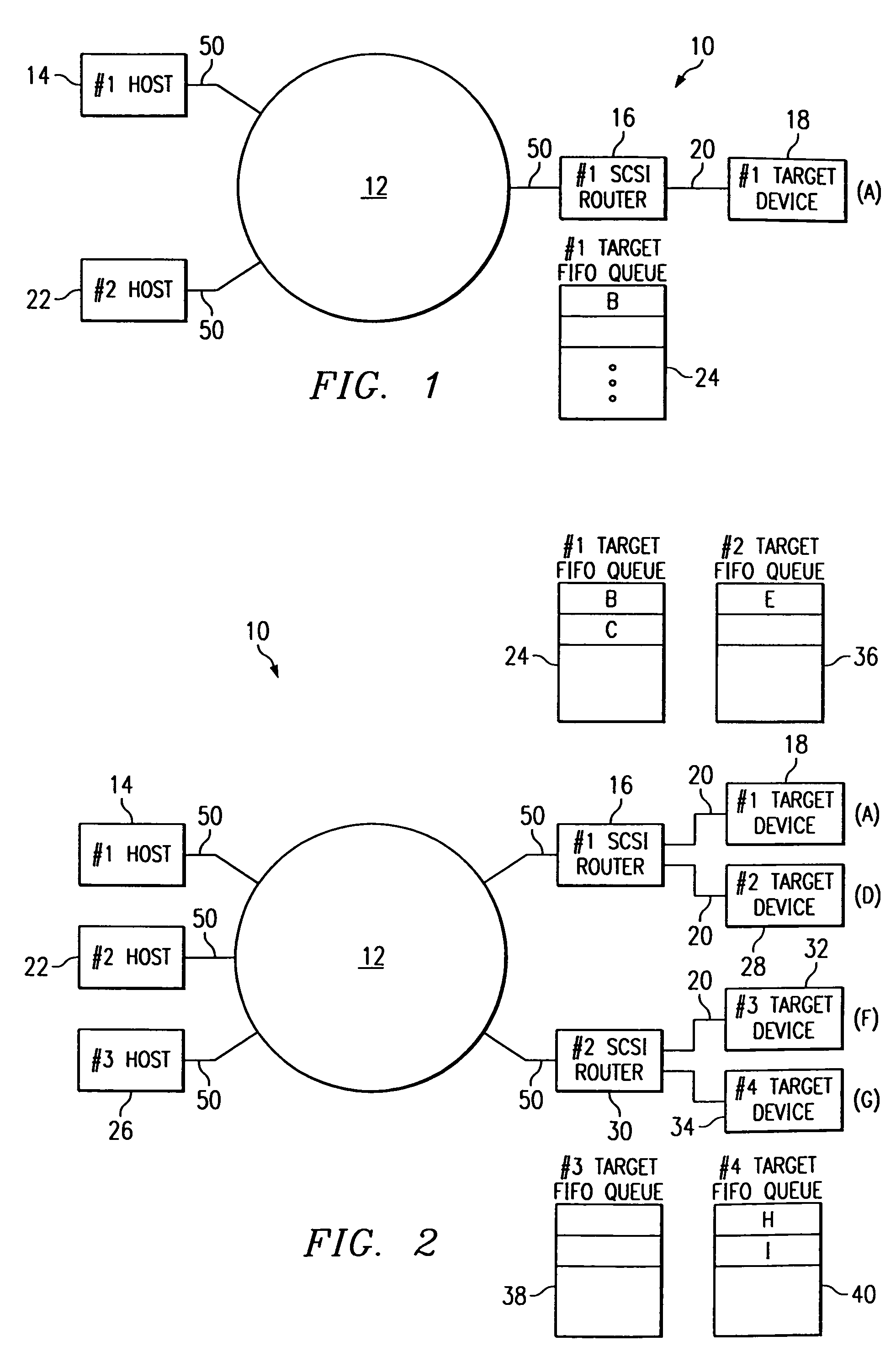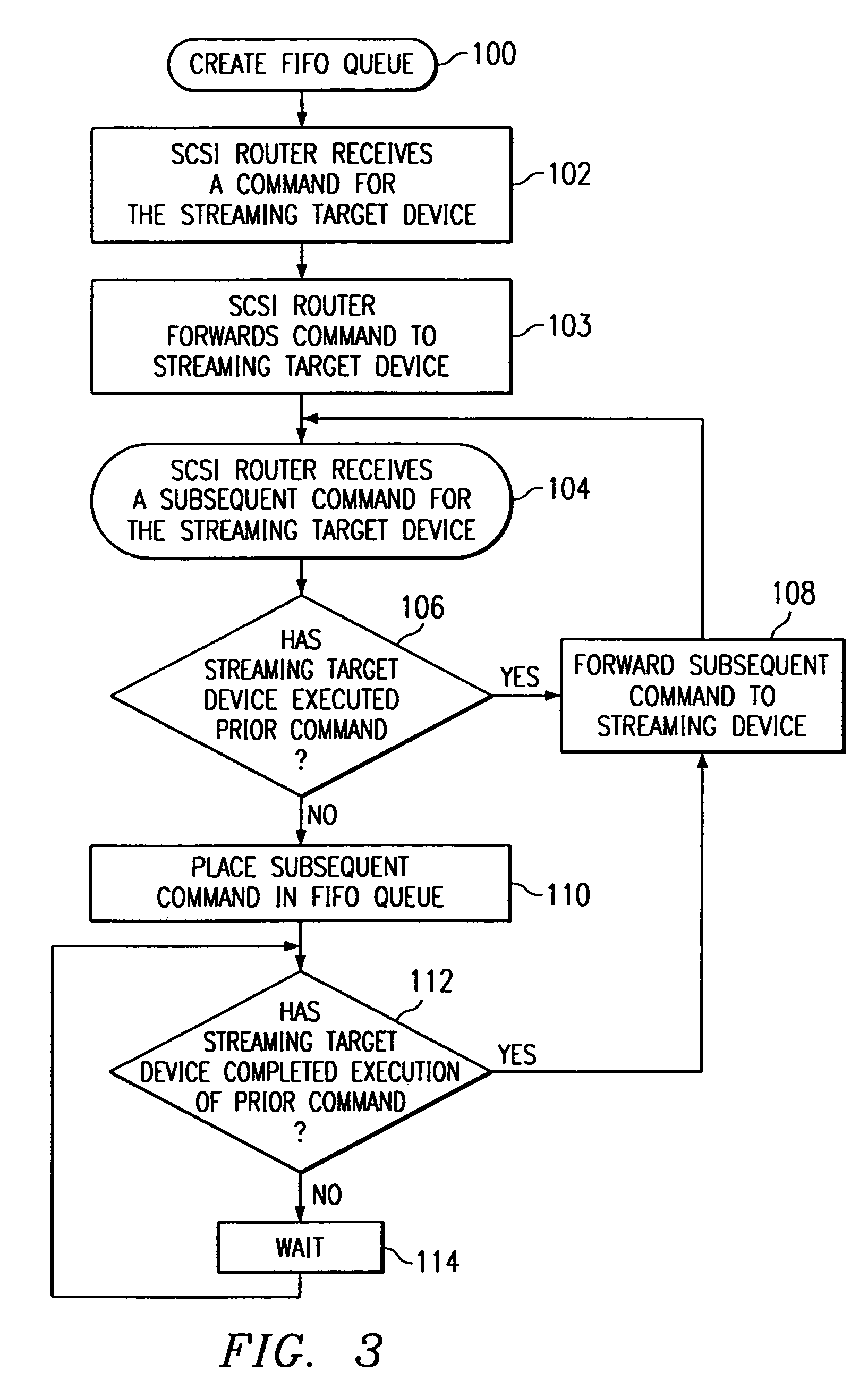Method and system for multi-initiator support to streaming devices in a fibre channel network
- Summary
- Abstract
- Description
- Claims
- Application Information
AI Technical Summary
Benefits of technology
Problems solved by technology
Method used
Image
Examples
Embodiment Construction
[0026]Preferred embodiments of the present invention are illustrated in the FIGUREs, like numerals being used to refer to like and corresponding parts of various drawings.
[0027]The present invention maintains a FIFO (first in, first out) queue for each streaming target device connected downstream of a SCSI router, and, upon receiving concurrent commands for a streaming target device, can place each subsequent concurrent command into the FIFO queue until the command ahead of it has executed. The method and system of the present invention can provide for sequential execution of each command to a streaming target device without rejecting commands received while another command is executing. Instead of issuing a check condition (overlapped_cmd) response to a Fibre Channel host that issues a subsequent concurrent command to a streaming target device, the method of this invention can place each subsequent concurrent command into the FIFO queue and continue with the execution of a prior co...
PUM
 Login to View More
Login to View More Abstract
Description
Claims
Application Information
 Login to View More
Login to View More - R&D
- Intellectual Property
- Life Sciences
- Materials
- Tech Scout
- Unparalleled Data Quality
- Higher Quality Content
- 60% Fewer Hallucinations
Browse by: Latest US Patents, China's latest patents, Technical Efficacy Thesaurus, Application Domain, Technology Topic, Popular Technical Reports.
© 2025 PatSnap. All rights reserved.Legal|Privacy policy|Modern Slavery Act Transparency Statement|Sitemap|About US| Contact US: help@patsnap.com



